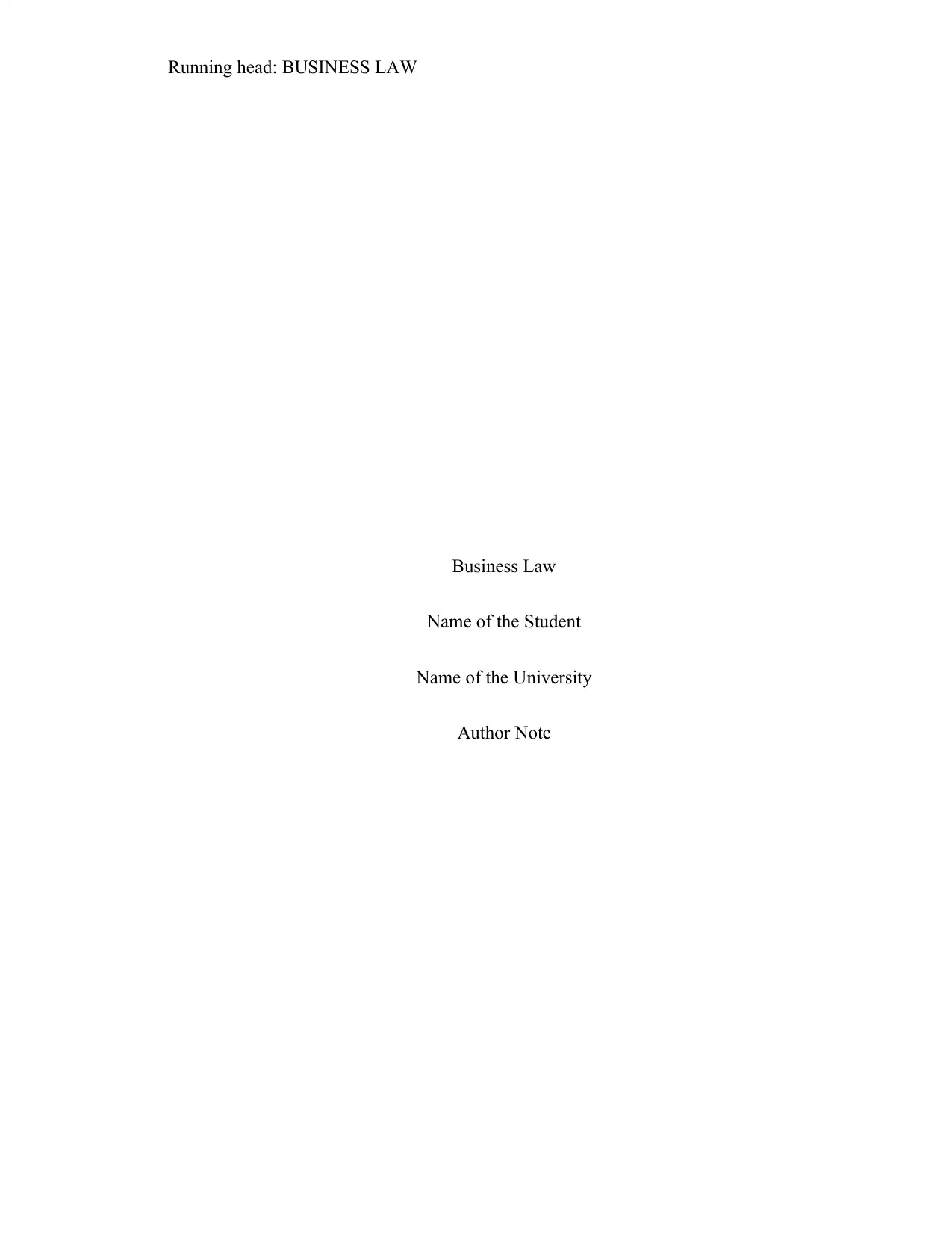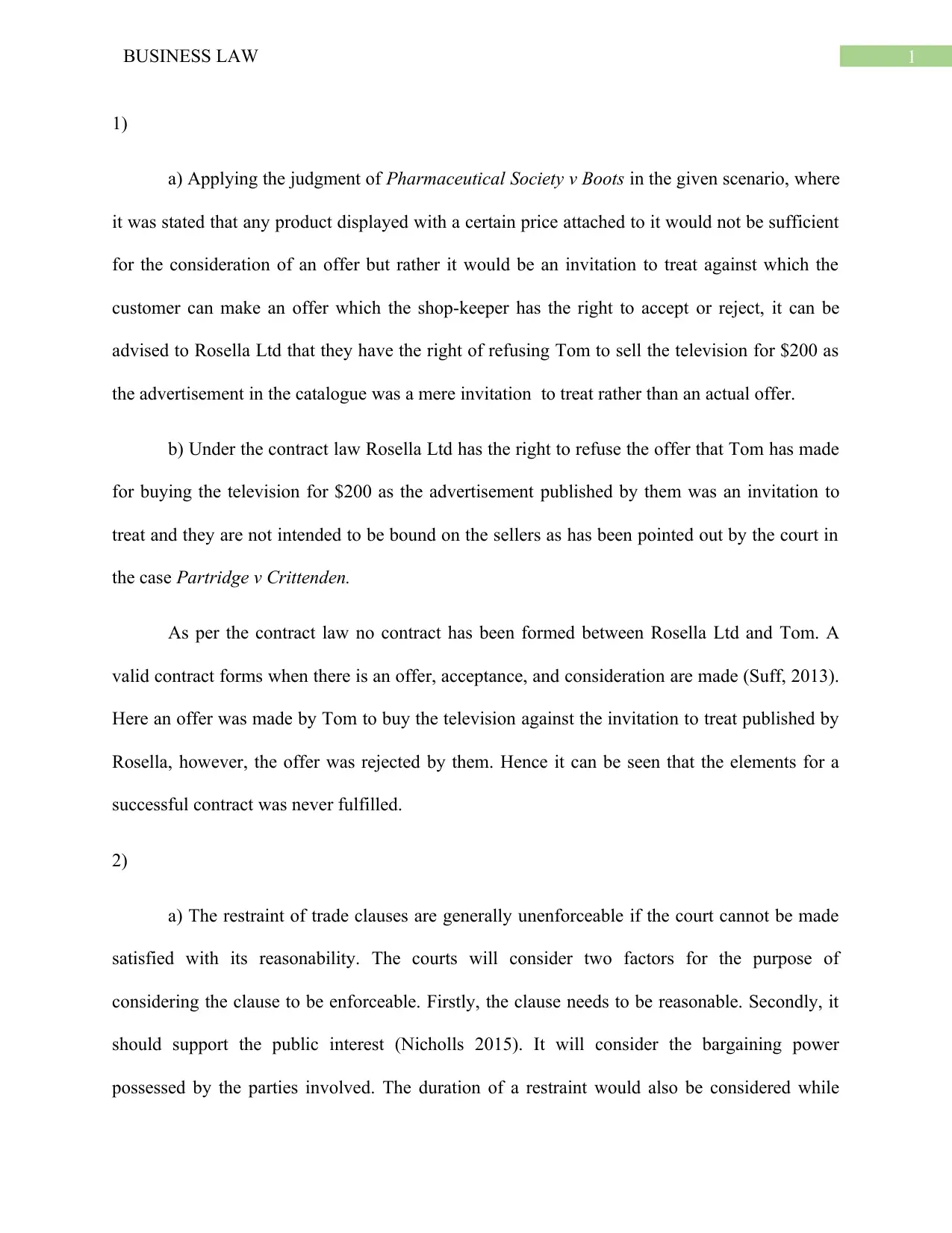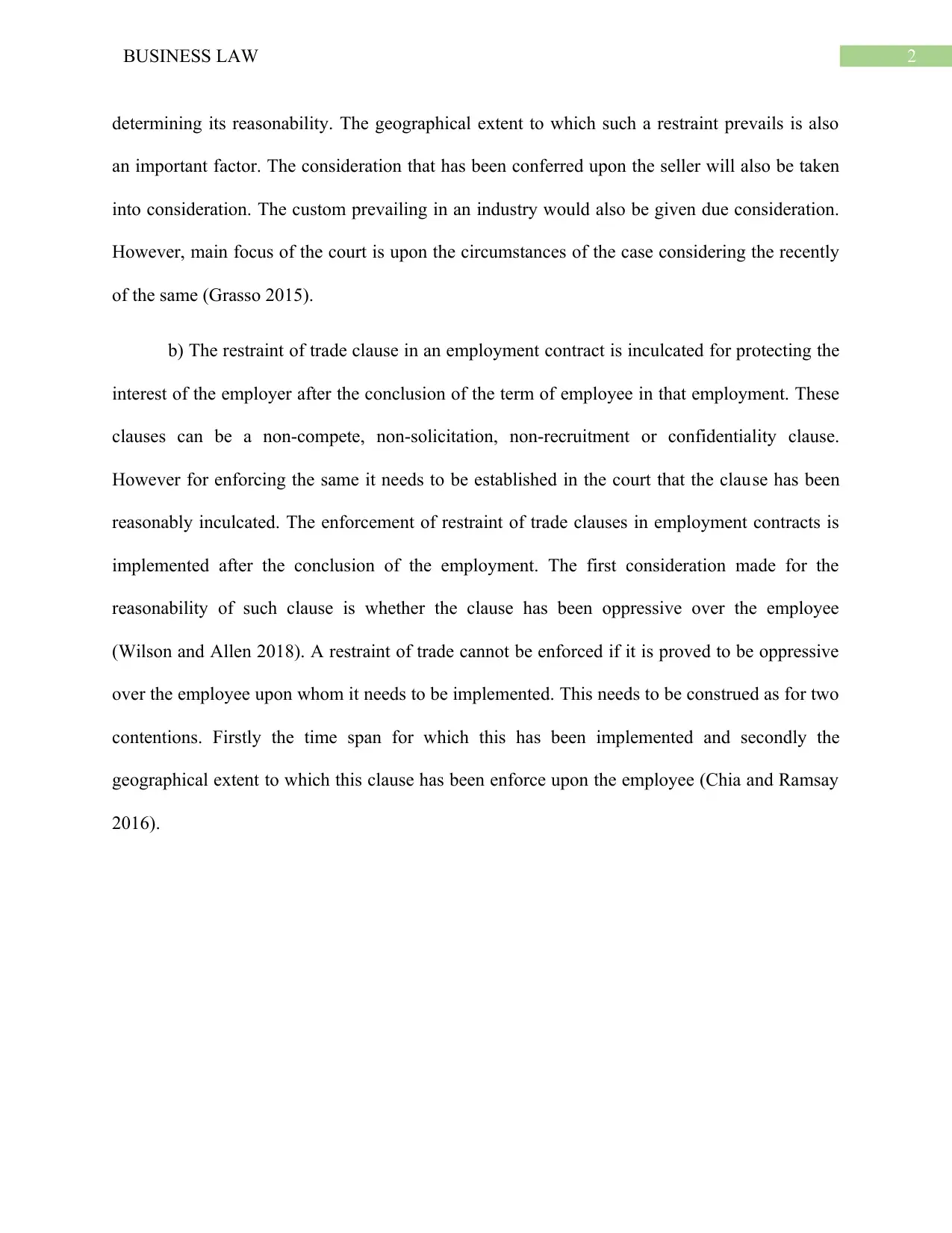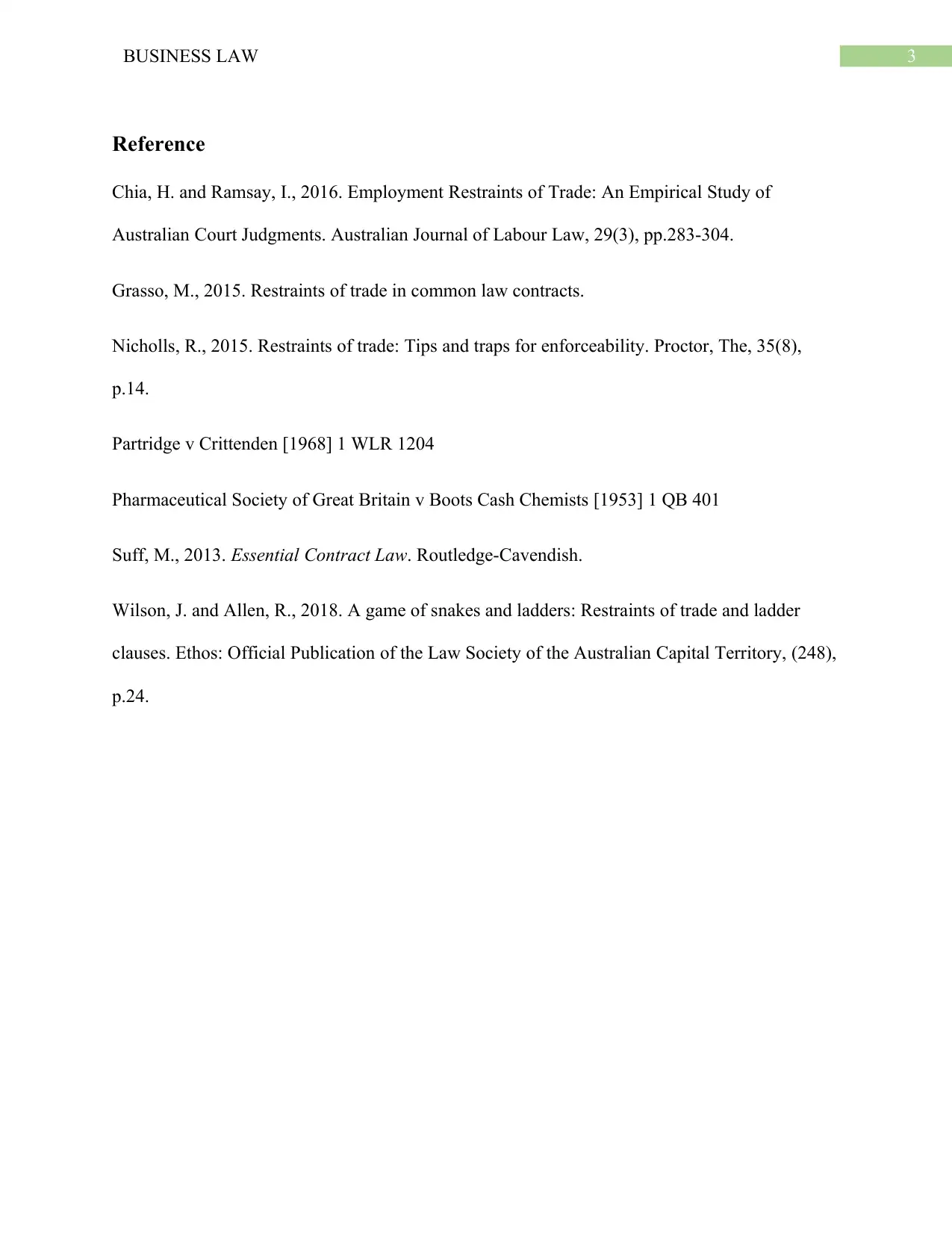Business Law Assignment: Contract Law and Restraint of Trade Analysis
VerifiedAdded on 2022/10/06
|4
|776
|15
Homework Assignment
AI Summary
This business law assignment analyzes two key areas of contract law: offer and acceptance, and restraint of trade clauses. The first section applies the judgment of Pharmaceutical Society v Boots to a scenario involving an advertisement as an invitation to treat, concluding that Rosella Ltd has the right to refuse a customer's offer. The second section delves into restraint of trade clauses, examining their enforceability based on reasonableness and public interest, including factors like bargaining power, duration, geographical extent, and consideration. It also discusses the application of restraint of trade clauses in employment contracts, emphasizing the need for reasonableness and the protection of employee rights. The assignment references key legal cases and scholarly articles to support its arguments.
1 out of 4











![[object Object]](/_next/static/media/star-bottom.7253800d.svg)